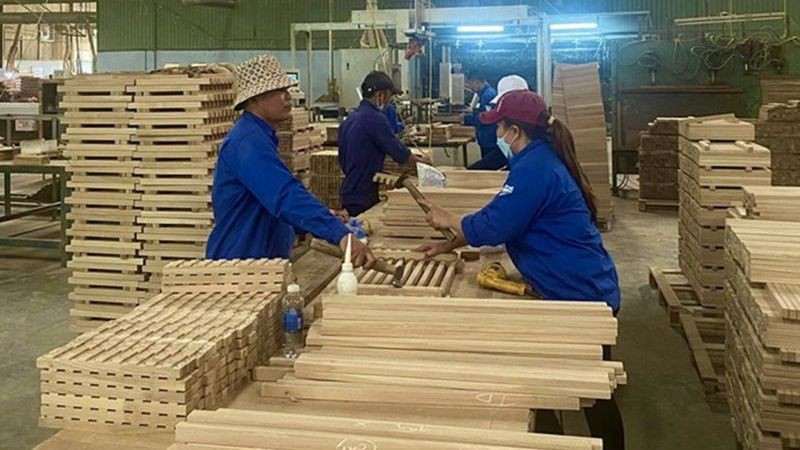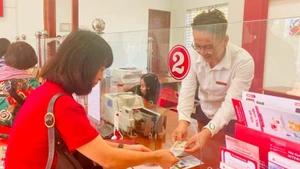Decent growth
According to the Department of Forestry under the Ministry of Agriculture and Rural Development, Vietnam’s export value of timber and forestry products reached 9.361 billion USD, up 20.5% over the same period last year and equivalent to 61.5% of the full-year target.
Trieu Van Luc, Deputy Head of the Forestry Department, shared that the timber and forestry export target for 2024 is 15.2 billion USD, of which timber and timber products account for 14.2 billion USD.
Currently, Vietnam’s timber sector is enjoying new opportunities from an improved global economy, which is expected to bolster Vietnam’s timber export in the remainder of 2024. In addition, a strong increase in orders for wooden furniture is usually witnessed in the final months as the home market enters the period of finishing and decoration to welcome a new year.
The timber processing industry is having many advantages from a highly-skilled workforce, abundant timber materials and legally imported timber that can be used to make traceable products.
In addition, Vietnam’s designs are also becoming more diverse to meet the world’s various needs. The global market for timber and timber products is estimated at 230 billion USD per year.
In the meantime, Vietnam’s timber export currently accounts for just 6% of the global demand, so Vietnamese enterprises still have plenty of opportunities to expand their market share. Vietnam has ratified many free trade agreements and facilitated timber enterprises to tap into such pacts effectively.
The domestic market of nearly 100 million people holds huge potential for the timber processing industry. The government, ministries and localities are also working to remove difficulties, improve the business climate, streamline administrative procedures and facilitate enterprise development.
Difficulties ahead
Alongside the above-mentioned advantages, timber enterprises are also facing numerous difficulties and challenges.
The global situation is forecast to continue witnessing unpredictable changes and increasing uncertainties. The global economy is facing mounting pressure from high interest rates, trade tensions, military conflicts and political changes, with the growth rate for 2024 projected at 2.6%, compared to 3.1% in 2023. These factors could affect the demand for timber and timber products in the final months of 2024.
In addition, Vietnam’s key timber export markets, such as the EU, US, Japan and the Republic of Korea, continue to face economic difficulties and issues related to commodity protection.
Another challenge is rising costs in marine shipping, which is pushing up the prices of raw materials, with some recording increases of up to 40% against last year. This will affect the prices of final products, while importers are asking for price reductions.
To overcome the difficulties and achieve the export target, it is necessary for timber enterprises and state agencies to continue implementing the promulgated policies effectively and attract various economic sectors to take part in forest development and processing of timber and forestry products.
It is also necessary to expand the markets for timber and forestry products through the organisation of trade fairs and other promotion activities. Measures are needed to promptly address the difficulties facing processors and exporters of timber and forestry products.
At the same time, relevant agencies need to introduce mechanisms and policies to ensure legally sourced timber; watch the global and domestic timber markets closely to provide enterprises with up-to-date information so they can adjust their business plans accordingly; and support enterprises to enhance their capacity to deal with trade competition incidents.
According to Do Xuan Lap, Chairman of the Vietnam Association of Timber and Forestry Products, one of the critical matters is enhancing enterprises’ competitiveness with five pillars: technical solutions and technology in production; green production; management solutions, with a priority given to digital transformation; trade promotion; and building an internal supervision code for enterprises.
It is necessary to replicate the successful models of cooperation between timber processors and forest planting households to ensure the legal source of timber, enhance the added value, and reduce costs for Vietnamese timber products.
Furthermore, promotion activities should be stepped up to maintain established markets and develop new markets such as the Middle East, India and South America.
















